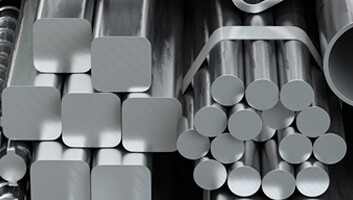Copper Oxide Nanoparticles Dispersion
Copper oxide nanoparticle dispersion is tiny particles of copper oxide (a chemical compound of copper and oxygen) suspended in a liquid. These nanoparticles are small, usually measuring less than 100 nanometers in diameter, about 1/1000th the width of a human hair.


The term "dispersion" refers that these nanoparticles are evenly distributed throughout the liquid, so they don't clump together or settle at the bottom of the container. This even distribution is important because it allows the nanoparticles to be used in various applications, such as inks, coatings, and electronics.
Copper oxide nanoparticle dispersion is a mixture where very small particles of copper oxide are spread evenly in a liquid. That is done by using high-frequency sound waves. These mixtures have unique properties and can be used in many ways, such as making new medicines or cleaning the environment. They are minimal but have special abilities that make them useful in many areas.
Specifications
Properties of Copper Oxide Nanoparticle Dispersions
Copper oxide nanoparticles (CuO) have unique properties due to their small size, which can differ from bulk copper oxide material. They have a larger surface area, higher reactivity, and altered electronic properties, making them useful in various fields, such as catalysis, biomedical imaging, and energy storage.
1. Small size: This comprises tiny particles with lots of surface area, which means they can react more quickly with other substances.
2. Stable: They don’t clump together or settle, which makes them easy to use in liquids.
3. Antimicrobial: The dispersion can kill or prevent the growth of bacteria and other harmful microorganisms.
4. Conductive: It can conduct electricity, which makes them useful in electronic applications.
5. Catalyst: It can speed up chemical reactions, making them useful in industries that require fast chemical processes.
Applications Of Copper Oxide Nanoparticle Dispersions
1. Antifouling coatings: It can be used in coatings for ships and boats to prevent marine organisms like barnacles and mussels from sticking to the hull, which can cause drag and reduce fuel efficiency.
2. Textiles: It can be helpful in fabrics to make them antimicrobial, helping to prevent the growth of bacteria and reduce odors.
3. Biomedical applications: It has potential applications in drug delivery, imaging, and cancer therapy.
4. Water treatment: It can remove pollutants from water, making it safe for consumption.
5. Electronic printing: It can produce conductive inks for electronic printing, such as solar cells and sensor manufacturing.
How to use it?
1. Antifouling coatings: To use this dispersion in antifouling coatings, mix them with other coating ingredients, such as paint, and apply the mixture to the surface of the ship or boat. The copper oxide nanoparticles will help prevent marine organisms from sticking to the hull.
2. Textiles: To use it in textiles, mix dispersion with the fabric material or apply them as a coating. The nanoparticles will help prevent the growth of bacteria, reducing odors and improving hygiene.
3. Biomedical applications: Using this dispersion in biomedical applications can be incorporated into drug delivery systems, imaging agents, or cancer therapy. The specific method of use will depend on the application.
4. Water treatment: To use it in water treatment, mix them with the water to be treated or apply them to a filtration system. The nanoparticles will attract and remove pollutants, such as heavy metals and organic compounds, making the water safe for consumption.
5. Electronic printing: To use it in electronic printing can be incorporated into inks for printing electronic circuits or solar cells. The ink can be printed onto a surface, and the copper oxide nanoparticles help conduct electricity.
Safety Instructions:
1. While handling, wearing protective clothing, such as gloves and a lab coat, is essential to prevent skin contact.
2. Inhalations may cause respiratory problems, so use a fume hood or other protective equipment to avoid exposure.
3. Make sure to work in a well-ventilated area to prevent the build-up of fumes.
4. It should not be ingested, as it can be toxic. Store it in a secure location away from food and drink.
5. It should be disposed of correctly per the regulations and guidelines for hazardous waste.
6. Always follow the manufacturer’s instructions for safe handling and use recommendations.
Why Choose Us?
Copper oxide nanoparticle dispersions have unique properties that can improve the quality of products, such as making textiles more hygienic or antifouling coatings more effective. It is better for the environment than traditional materials, especially in applications such as antifouling coatings, which can help prevent harm to marine life. It is more affordable than other materials, mainly when used in small amounts, making them cost-effective. It has the potential to be used in cutting-edge technologies and applications, which can lead to exciting innovations and discoveries. We can manufacture and supply it as per the required customizations. The client may purchase copper oxide nanoparticle dispersions because they offer unique properties that can improve product quality, are cost-effective, are better for the environment, and have the potential for exciting innovation.

